Majestic Mt. Fuji Overlooking A Misty And Watery Pine Grove On Smooth Black Silk.

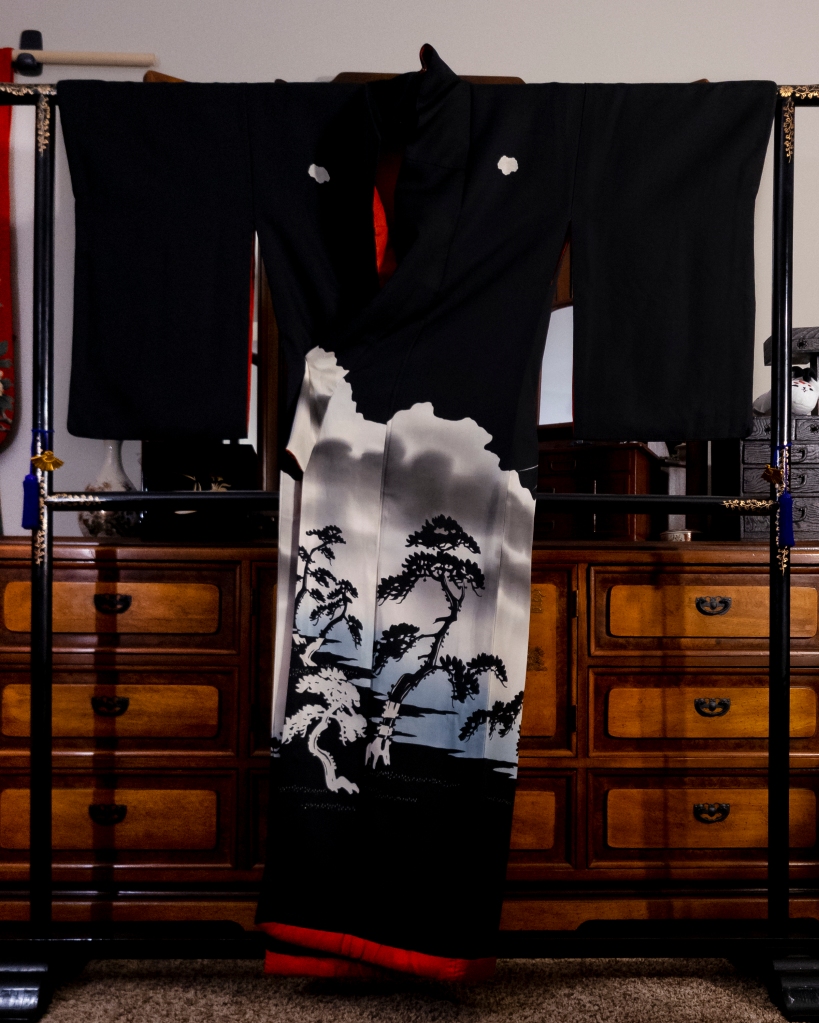


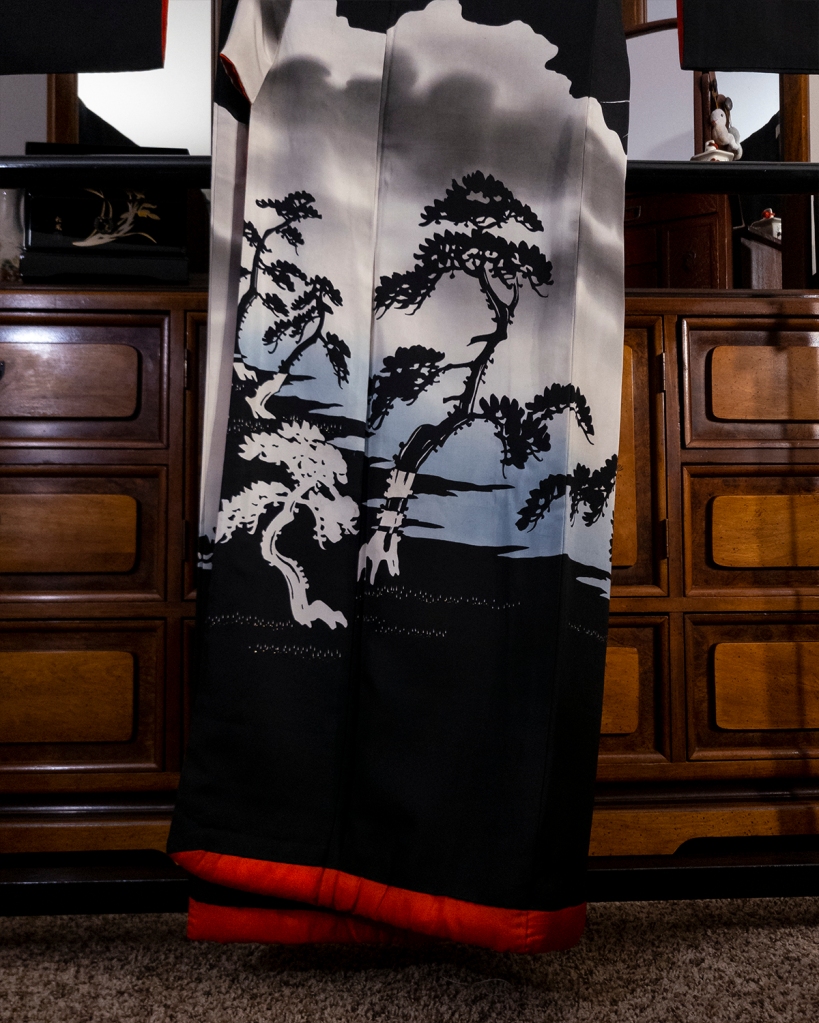

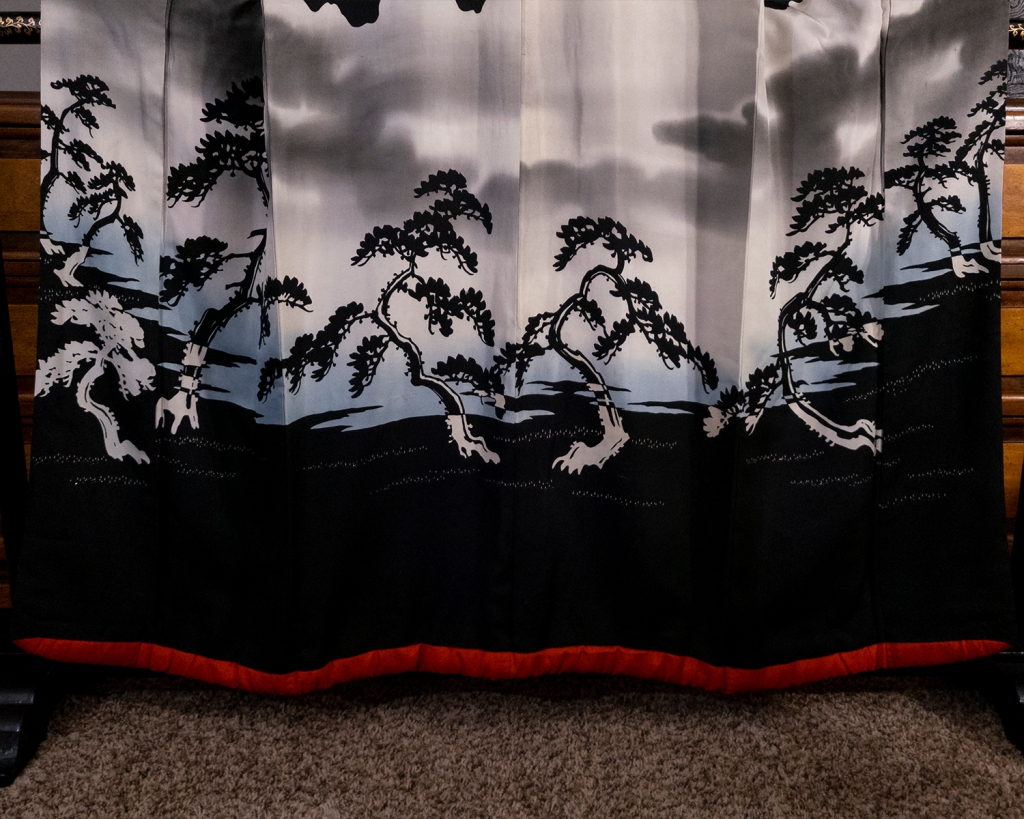

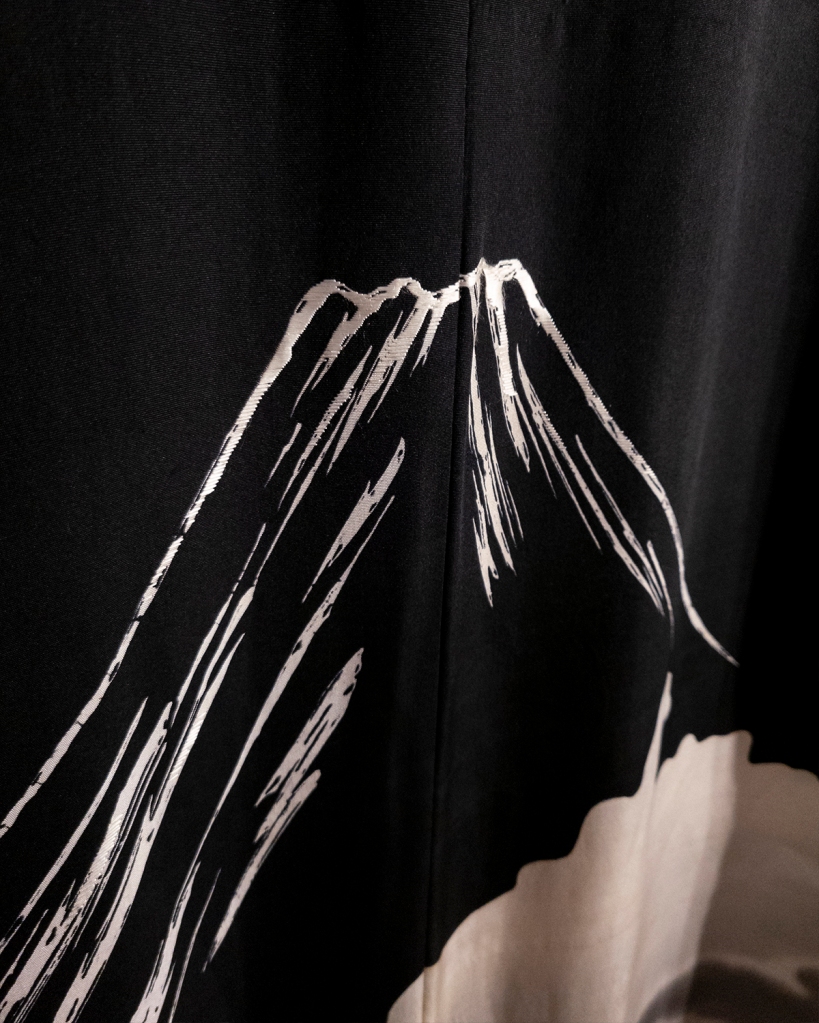



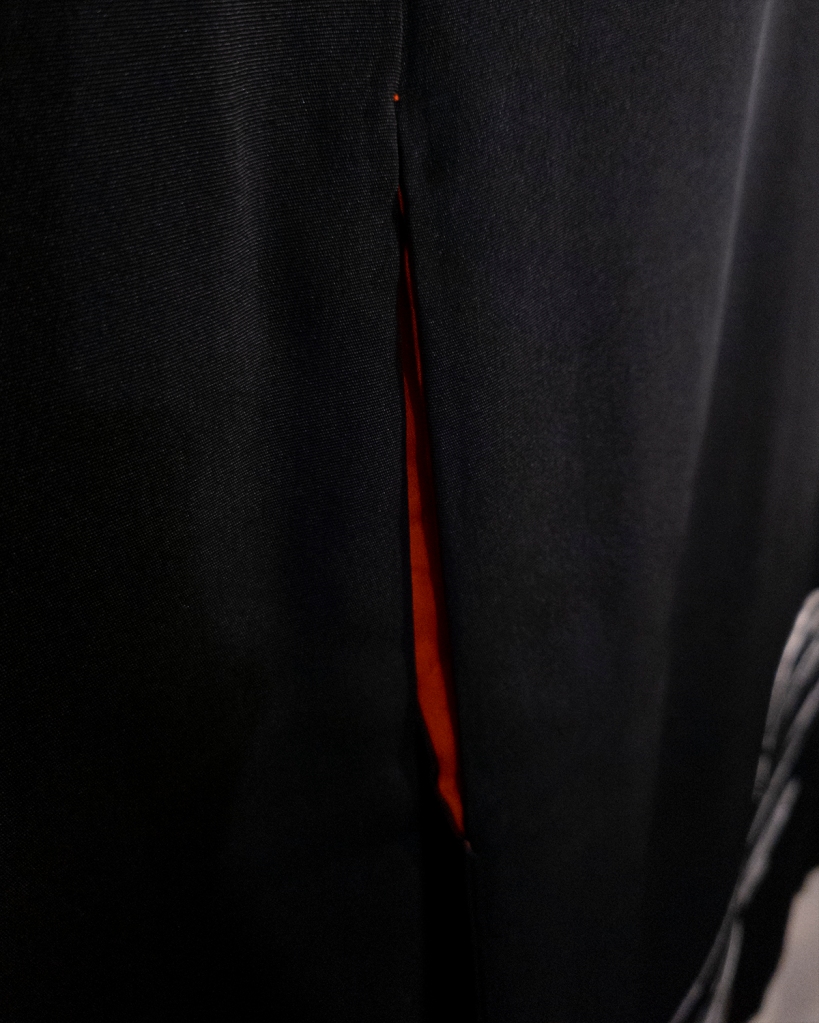
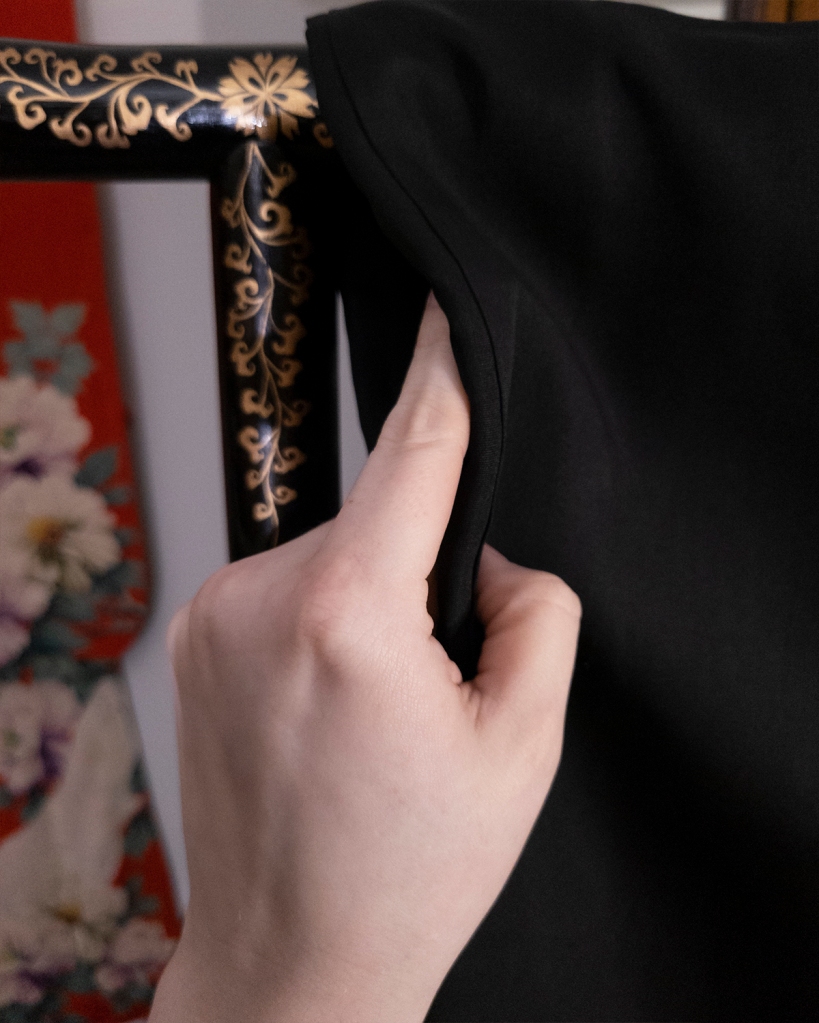



I definitely needed another one of these, right? Even if it didn’t need anything in terms of restoration or repair, really? It’s not that I collect things like furisode and uchikake (in short loose terms, wedding kimono) exclusively. It’s that I really am just a big goddamn sucker for things that are especially picturesque. If there’s anything that has the fabric real estate for something bombastic like a whole-ass volcano, it’ll be on an uchikake. So here we are.
This delightful old girl turns out to be in better shape than I thought. The seller photos made it out like it was dirtier than it is. This is where I reveal two of the most useful items in my kimono cleaning arsenal: a good quality lint roller and a clothes brush. You would be surprised how much dirt actually just lifts right the fuck off when properly motivated. A lot of the gunk that was pictured were actually just caked-on dust. Yes, in humid environments, dust can cake! And if you just kinda…uh…whack it enough, it goes the fuck away!
The rest of it was water spotting. Not the kind from actually getting drenched or anything, but more like just slight foxing. I stared at it making all kinds of faces–like I was having a staring contest in the Lemon Suckers’ World Championship–deciding if I wanted to attempt to do anything about them. Eventually, I hit them with the vinegar method, and they faded significantly. I actually only gave them one round, because I wasn’t even slightly in the mood to try to chase perfect on this piece because it is so insanely close to mint condition already. If you’ve been with me for a bit on this blog, you know my feelings about chasing perfect.
Oh no, my friends. There was something else that my whole brain decided to go chasing. It’s this:

I have seen this before. Or something very similar. And I need to know what and where.
The hunt was on.
I’ve mentioned it before, but I actually know quite a lot about art and art history. -Cries over actual degree in illustration.- I have a good familiarity with Ukiyo-e and other styles of Japanese art. And of course, Ukiyo-e–woodblock printing at the simplest explanation–covers a lot of subjects. One of the most popular of which would be Fujiyama. Or as we know it here in the good ol’ US of A, Mt. Fuji. So I started pouring over my knowledge of Fujiyama’s appearances in art to figure out where I might have seen this before. Now let me say that I knew when I started that might not be looking for an exact copy. I was looking for something very similar. Hell, my brain could have manufactured an amalgam of different pieces into something like this, and I would be none the wiser until I started researching. The brain is a fucker like that. Did you know that there has never been a cornucopia in the Fruit of the Loom logo?
As I searched, I got angrier and angrier. Dear Google, it is with my whole heart that I would like you to completely and fully go fuck yourself. Please ram an entire pineapple up your own asshole while singing Mary Had A Little Lamb, because you don’t deserve less pain than that for what you’ve become. You are not a search engine. You’re a to-the-highest-bidder sales machine, and we all know it. You were once special. You are now the enemy of academic research. Sincerely, Go Fuck Yourself.
Anyway, that came from me not wanting to buy any fucking pictures of “history of Aokigahara in art” and yet every result for the first five pages were nothing but shit from FuckCopyrightDotCom Redbubble, or print sites, or even DeviantART, and -ugly sigh- Pintrest. The bane of image searches. The reason so many people have racoon skulls tattooed on them. (Look it up, it’s pretty fucking funny.)
For the record, I don’t actually think that this was Fujiyama overlooking Aokigahara necessarily–it’s just that it takes up most of the northwestern side of the goddamn mountain. You can also see that the mountain peak is quite pointy, which tells me that we’re looking up at it as opposed to across to it. That’s when the lovely Emily pointed out that there’s water in this picture. AHA! Here’s the thing about that. When you can identify points of geography, it becomes easier to search for things like landscapes, that’s for damn sure!
You know…people learn a lot about Hokusai. Do you know Hokusai? Of course you do! He did this:

The Great Wave Off Kanagawa is part of a series called Thirty-Six Views of Mount Fuji. Of course I poured through those. A lesser known artist in the Western world but still very famous is Hiroshige. You know what I learned about Hiroshige? Two things:
1.) People in the US seem to confuse Hiroshige and Hokusai as the same person. This is because Hiroshige also produced a series of thirty-six views of Mount Fuji.
2.) Hiroshige was prolific when it came to his images of Fuji. This guy could wipe his ass and it would stain in the perfect visage of the majestic goddamn mountain in question. He later produced a hundred goddamn more views of Mount Fuji.
Holy balls did I have a lot to choose from. You know, once I stopped using Google to help me in any meaningful way.
It’s this one:

This is Miho no Matsubara, which is a real place, although it’s not as great as its original splendor. Humans kind of suck like that. But you can damn near line them up, this shot of Fujiyama and the one on the uchikake. And this makes me stupid happy. I am so happy that it is stupid. This is the one I was thinking of. I went fucking cross-eyed trying to find it, too. Go me.
So! What does all of this have to do with this kimono again? Oh yeah! That a huge number of themes and images that appear on kimono are actually allusions to art that already exists. It’s totally a thing. I wonder if there’s a word for it…you know, other than allusion.
Back to the uchikake itself, I wondered for a moment if had ever even been worn. I actually really hope so, because it would have been a fucking crime for this beauty not to have shined on someone’s big day. But when she arrived to me, all of her shitsuke ito (basting stitches) were still intact…well, sort of intact. Those aren’t meant to be permanent, and they definitely deteriorate over time. Check it out:
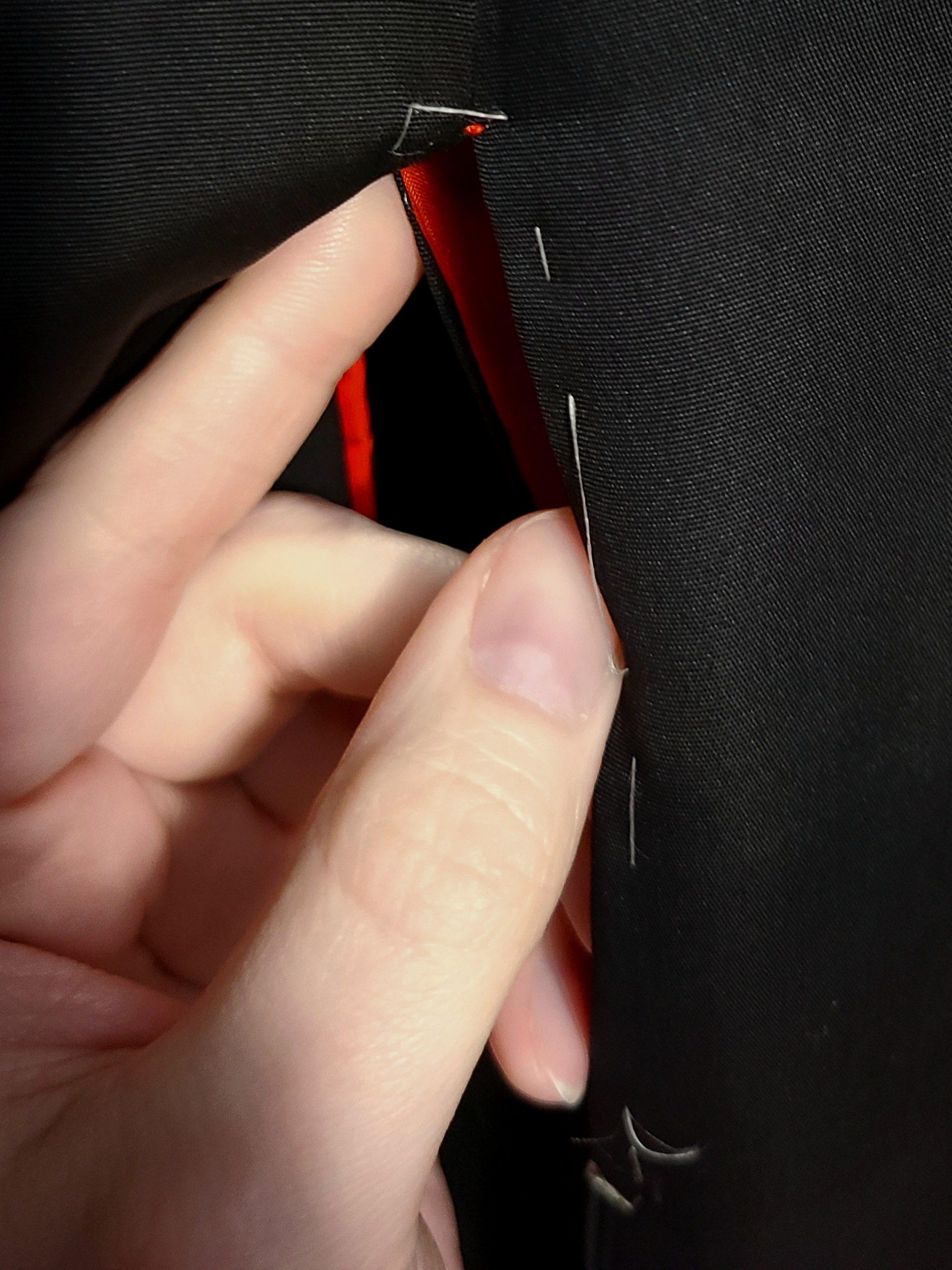
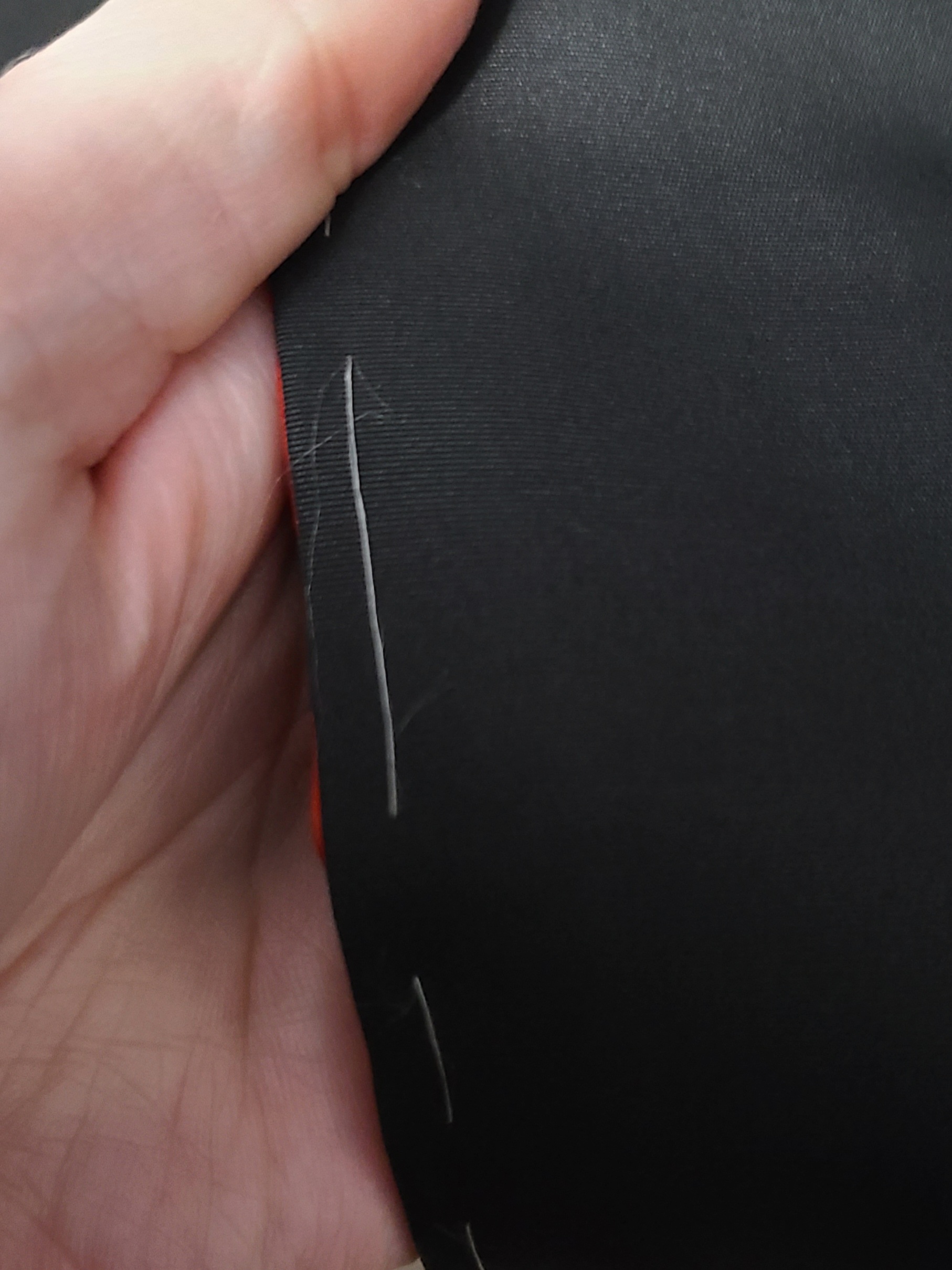

That last picture is actually a seller picture. I forgot to snap my own of the red stitches before I removed them. I almost wanted to keep them, because it’s very unusual to see an uchikake that still has them–but they were putting unnecessary pressure on the lining. The lining is in amazing condition, so I prioritized the structural integrity of the lining over the novelty of the red stitches. They had just been pulled too tight at some point, and I wasn’t having it. Speaking of unusual stitches in an uchikake, these motherfuckers:


As I have demonstrated in the photo, these strings have a purpose! You pull them, and they fold the collar in half, inward. These appear on old kimono plenty of times. Sometimes you get snaps, too. This is probably the first time I’ve ever seen them on uchikake, before, though! And of course, look at the size of these kamon (family crests).

I can’t help myself sometimes, so I don’t.
So at the end of this, what do we have? This is a later Meiji Era uchikake (outermost wedding kimono). It is fully lined in soft red silk, with a thicccc padded hem. It measures rather short, but normal for its age, at 156cm, and features Fujiyama overlooking a pine forest. It is also decorated with gold wires, giving it a beautiful glimmer as it moves. It bears five tsuta (ivy) kamon.
Join me next time when I’ll be showcasing an absolute fucking train wreck that just showed up at my door. Until then!
BYE.
Aaahhh it’s so gorgeous!! Also I’m glad someone else is driven crazy by having to find a literary/artistic reference… 😅
LikeLiked by 1 person
I just found your site yesterday and what a coincidence. I was one of the bidders on this also. I was absolutely confused as to why this one went for a princely sum at the last minute. Your explanation into the history of it helped unravel that mystery. I had assumed it was just because it had generic picturesque fuji, and the weebs were all over it, but it was much more.
I missed that this was an uchikake or maybe hikizuri. I had no idea the mon size dated the age of a piece. I also never made the connection to imitations of prior great works.
Thank you for your blog. We’ve gained valuable knowledge about cleaning and preservation that will help us fix up the treasures we have been collecting.
LikeLiked by 1 person
I’m glad that I was able to provide some information! This is most certainly an uchikake and not a hikizuri, just for the sake of clarity. And mon size helps with dating IMMENSELY! At around the middle of the Taisho Era, you’ll see that kamon become smaller and closer to the contemporary sizes we see today. So using it as a reference is quite useful.
It’s also worth noting that you’ll very rarely see a modern or even vintage uchikake with shorter sleeves like this (exception for stage production garments)!
LikeLike
Wanna hear something fun? I was drooling over this Meiji piece and reading your art history commentary on it, while listening to the ‘Exhibiting Meiji art and culture: Curatorial perspectives’ Nov 2023 lecture from the JASA YouTube channel. Yay, multitasking underestimated ADHD brain! But, seriously. It was THE perfect experience :)))))
LikeLike
*under-stimulated (I swear, I’m educated 👽)
LikeLike